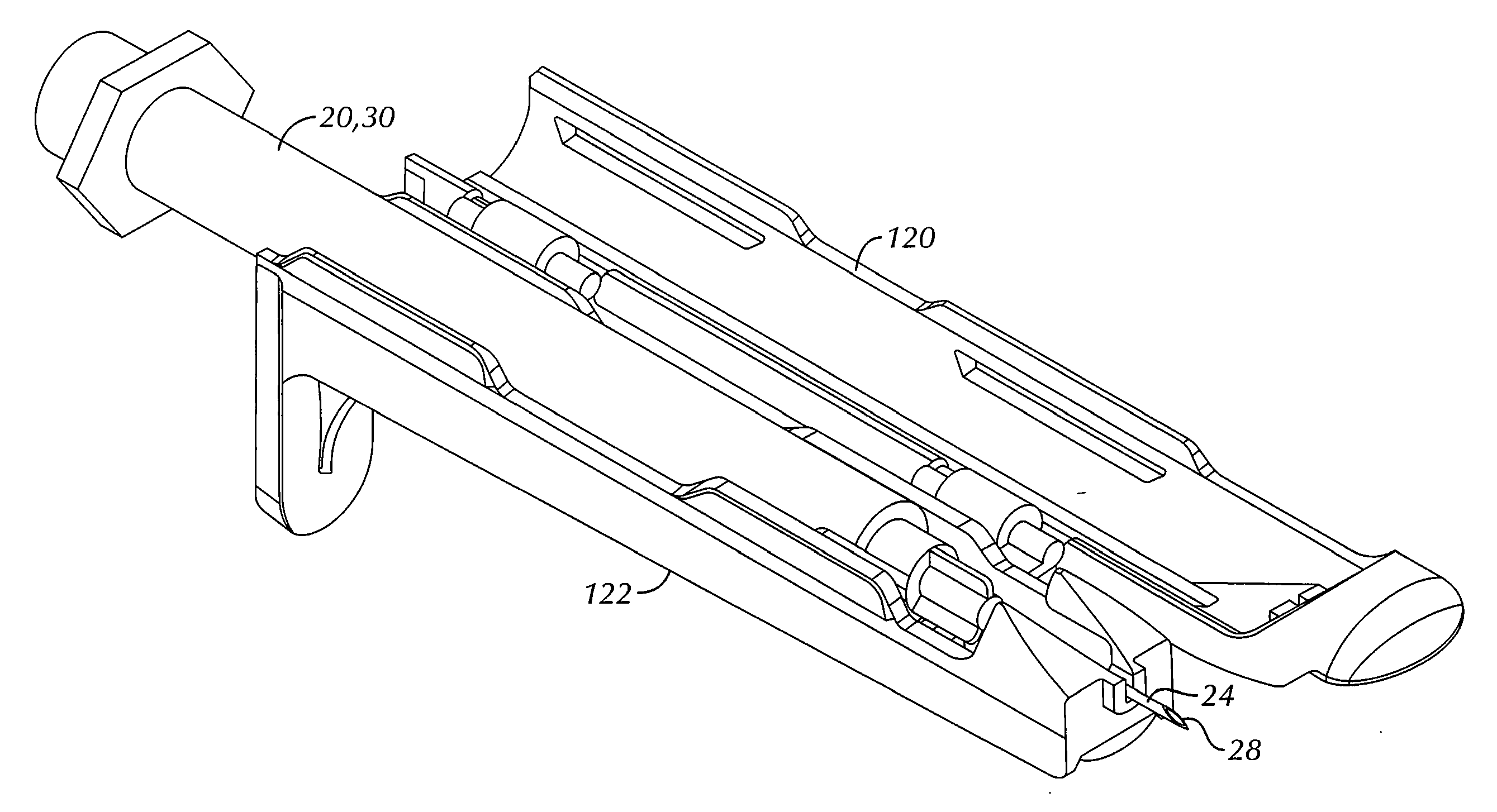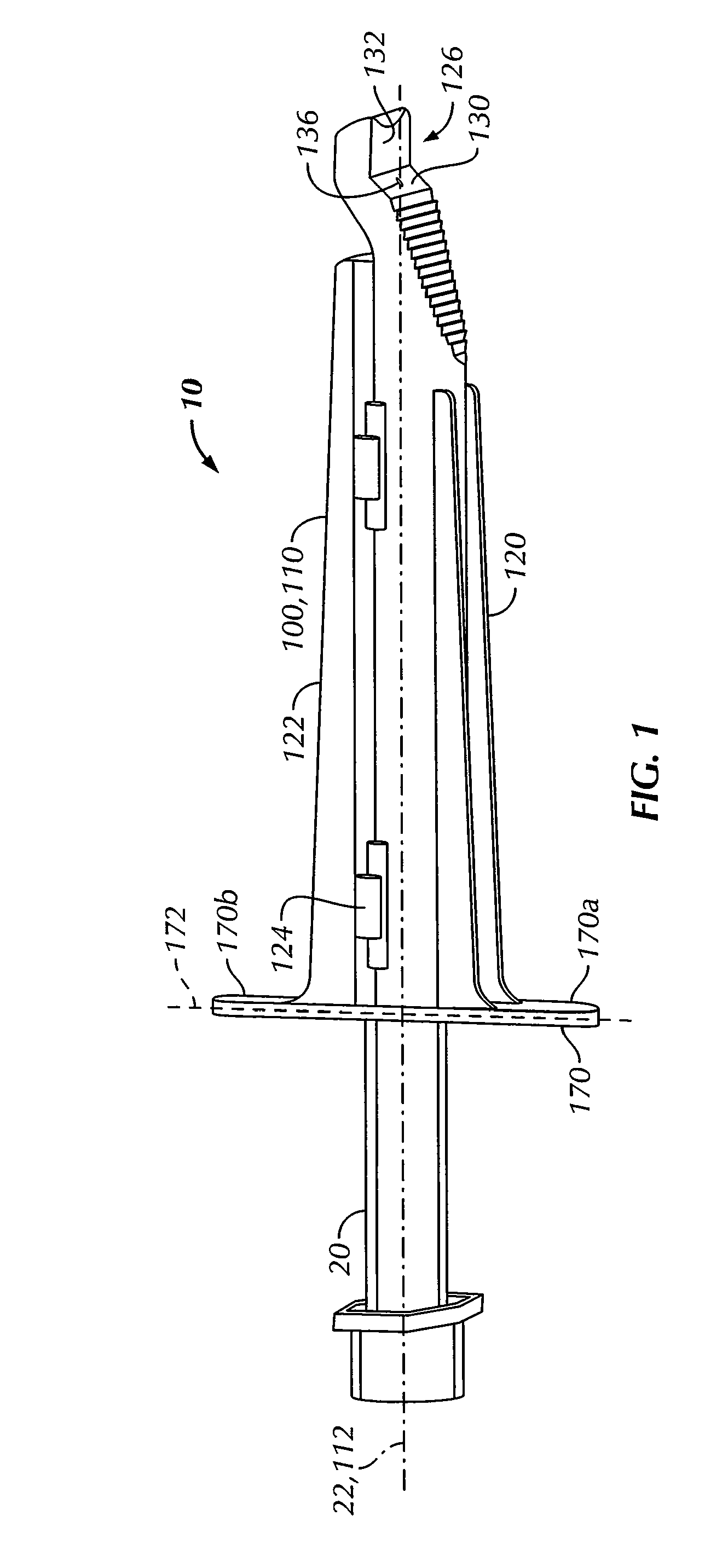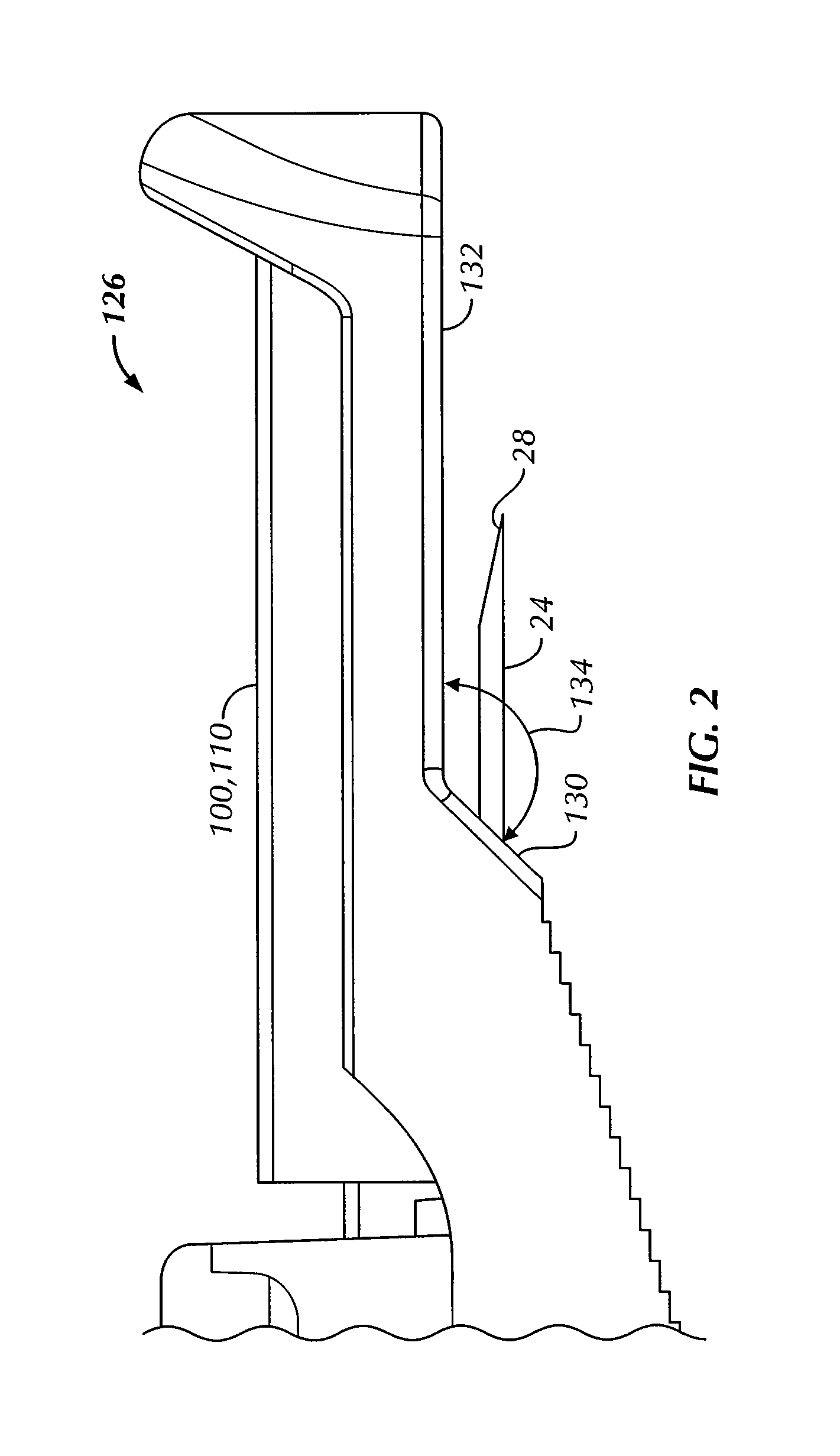Alignment of a Needle in an Intradermal Injection Device
a technology for intradermal injection and needle alignment, which is applied in the direction of intravenous devices, etc., can solve the problems of intradermal injection difficulty, failed injection, and lost delivery compound on the surface of the skin
- Summary
- Abstract
- Description
- Claims
- Application Information
AI Technical Summary
Problems solved by technology
Method used
Image
Examples
first embodiment
[0035]Referring to the drawings, shown in FIG. 1 is a first presently preferred embodiment of an adapter device 100 for use in combination with a syringe 20 to form an assembly 10 for delivering an intradermal injection. The adapter device 100 comprises a body 110 connectable to the syringe 20. In this first embodiment, the body 110 is formed in a first portion 120 and a second portion 122, the portions 120, 122 being rotatably connectable by one or more hinges 124 and inter-engaging connector tabs 125 and receiving holes 127 (see FIG. 3). The body is preferably formed using conventional polymeric materials, for example polypropylene, using conventional fabrication techniques, for example, injection molding. Other materials and fabrication techniques could also be used.
[0036]The body 110 may be sized and shaped to accept any type of syringe 20, for example a fixed needle style syringe 30 (see FIG. 5), or a Luer lock style syringe (not illustrated) or other standard syringes. The syr...
second embodiment
[0061]More particularly, as illustrated schematically in FIGS. 11A and 11B, a third needle alignment technique is based on providing the single support element 240 having a planar portion 242. With the syringe 20 and second embodiment adapter device 200 fully assembled, the planar portion 242 positions the needle cannula 24 at a known support angle 280 relative to the syringe centerline 22. More particularly, the single support element 240 supports the needle cannula 24 at the support point 290 which is offset from the syringe centerline 22 in a vertical plane 248 substantially perpendicular to the planar portion of the second primary skin contacting surface 232. The offset can be either toward the second primary skin contacting surface 232, or away from it (that is, either in a positive or negative y direction, (the y direction being as indicated in FIGS. 11A and 11B)).
[0062]In order to appropriately control the depth of the injection, the planar portion of the second primary skin ...
PUM
 Login to View More
Login to View More Abstract
Description
Claims
Application Information
 Login to View More
Login to View More - R&D
- Intellectual Property
- Life Sciences
- Materials
- Tech Scout
- Unparalleled Data Quality
- Higher Quality Content
- 60% Fewer Hallucinations
Browse by: Latest US Patents, China's latest patents, Technical Efficacy Thesaurus, Application Domain, Technology Topic, Popular Technical Reports.
© 2025 PatSnap. All rights reserved.Legal|Privacy policy|Modern Slavery Act Transparency Statement|Sitemap|About US| Contact US: help@patsnap.com



